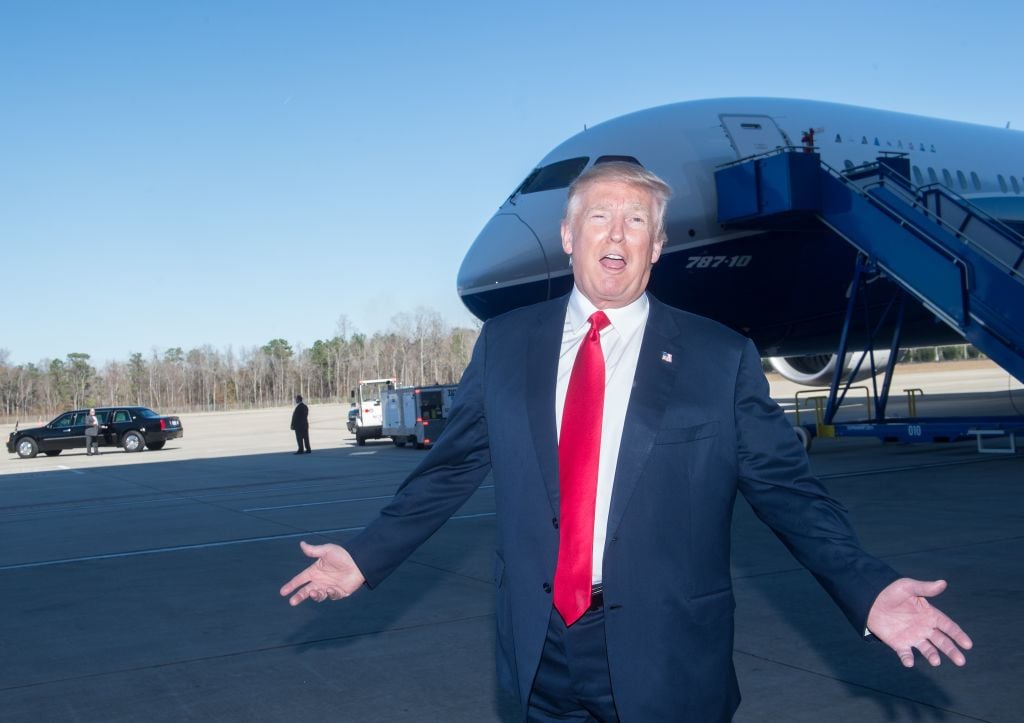
Watching Donald Trump being interviewed on 60 Minutes shortly after Election Day 2016, eagle-eyed art lovers might have noticed what looked like a painting by French Impressionist painter Pierre-Auguste Renoir hanging on a wall behind the president-elect. The especially astute might have noticed that it looked suspiciously familiar.
New York Times business reporter Timothy O’Brien had seen the painting before, on Trump’s personal jet, back when the president was still a private citizen. When Trump told O’Brien that it was the genuine article, O’Brien declared, “Donald, it’s not. I grew up in Chicago, that Renoir is called Two Sisters (on the Terrace), and it’s hanging on a wall at the Art Institute of Chicago. That’s not an original.”
O’Brien, who recalled the meeting in an interview with Vanity Fair‘s Hive podcast, also remembers that the day after that exchange Trump pointed out the painting again, as though the conversation had never happened.
A representative for the Art Institute of Chicago confirmed that Two Sisters is part of the museum’s collection but declined our request to comment further. A spokeswoman told the Chicago Tribune that the Institute is “satisfied that our version is real.”
Pierre-Auguste Renoir, Two Sisters (on the Terrace) (1881). Photo via Wikimedia Commons.
Two art historians were willing to comment on the painting. While neither spoke to President Trump’s assertions, their observations leave little doubt about the painting’s authenticity.
Richard Brettell is chair of aesthetic studies at the University of Texas in Dallas, a Yale University Ph.D., a former director of the Dallas Museum of Art, and author of several books on Impressionism. He was also curator of European paintings at the Institute from 1980–88. His verdict? It’s a fake. He writes in an email:
The wonderful Renoir “Two Sisters (On the Terrace)” was one of the stars of the 1882 Impressionist exhibition, which also featured his masterpiece, “The Luncheon of the Boating Party,” now in the Phillips Collection. The painting has long been known and has, since its gift to the Art Institute of Chicago in 1933, been one of the treasures of the museum. Can President Trump own another version? From my trained eye looking at a pretty good photograph of Mrs. Trump in their penthouse at Trump Tower, it seems clearly to be a copy of that famous Chicago picture. This is all the more obvious when we consider that Renoir himself never painted copies of his own pictures.
Richard Rand, associate director for collections at the J. Paul Getty Museum in Malibu, California, reached a similar conclusion. “While on rare occasions Renoir made variants of his painted compositions, he never copied himself or made precise duplicates of his oil paintings,” he said in an email. “If I were presented with a picture that was an exact copy of a famous Renoir hanging in a museum, I would guess it was probably a reproduction of some kind.”
Neither the president nor his press secretary, Sarah Huckabee-Sanders, responded to tweeted requests for comment. A staffer in the White House’s press office did not respond to requests for comment.
This isn’t the first time the authenticity of Trump’s art collection been called into question. In April 2016, the New York Post reported that a version of Renoir’s 1874 canvas La Loge (The Theater Box) adorned Melania Trump’s Fifth Avenue apartment. The original, however, hangs at London’s Courtauld Art Institute. (Press representatives of the Courtauld did not respond to requests for comment.) According to Vanity Fair’s Mark Bowden, Trump once bragged to the reporter that a “Renoir” hanging on the wall of his private jet was “worth $10 million,” pointing to the signature. Bowden didn’t specify the painting’s title at that time.
O’Brien, for his part, was quite willing to draw conclusions about Trump’s state of mind for the Vanity Fair podcast.
“He believes his own lies,” O’Brien said, “in a way that lasts for decades.”